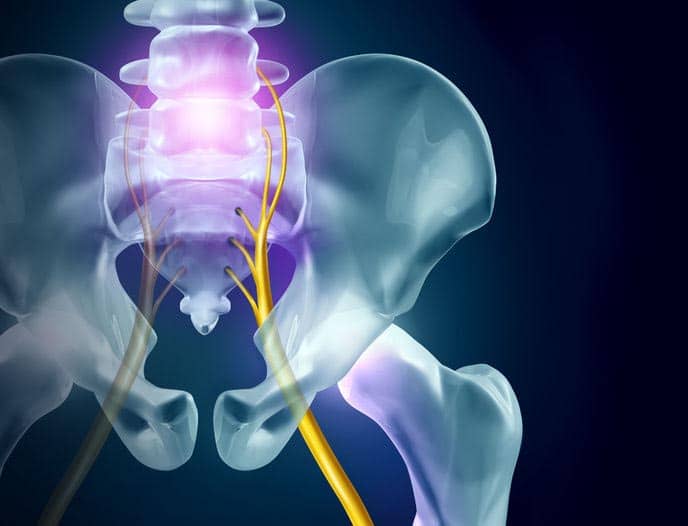Sciatica: Cause, Prevention and Management
06-Jan-2019
Sciatica is a condition anywhere along the sciatic nerve which begins in the lower lumbar area, but mostly under the sacrum, branching to both sides of the buttocks and down each leg. These neural pathways control movements of the legs as well as involuntary sensations, and to some degree bowel and bladder control. The pain associated with sciatica can vary significantly: mild ache to burning in the hip, sharp pain on movement, numbness or discomfort along the limb, tingling or weakness in the leg or foot. Typically, the symptoms affect only one side.
The cause can equally be varied: occupational or repetitive motion, bad posture, disk herniation or osteoarthritis. Inflammation from these result in the impingement of the neural pathway. As the pain and inflammation increases, so do spasms and tightness of the surrounding muscles which add to the problem.
There are many things you can do on your own to alleviate and address the discomfort of sciatica:
—Stop carrying items such as wallets in the back pockets. Sitting on objects can directly impinge the neural pathway.
—Stop crossing your legs while sitting. Leg crossing shifts more weight onto one side directly over the neural pathway. It also encourages curvature in the lumbar/sacral area adding to muscle tightness and neural blockages.
—Work on good posture. Sitting and standing with good posture is something most of us work on habitually—changing bad habits to good ones. It’s a process. Setting up good ergonomic environments in our daily routines can have profound effects on our spinal health.
—Exercise. Targeted stretching and strength training can greatly support the vertebrae (disks), decrease the compression of the bursa between them and increase the range of motion in the pelvic area. Core exercises of the abdomen greatly enhance not only strength but muscle balance front to back and side to side which can lead to overall improvement of posture.
—Massage. Deep tissue work, especially when incorporating range-of-motion movements and stretching can be a great passive way to ‘free up the congestion’ that leads to sciatica. Massage of tight muscles in the lumbar and gluteal areas can also help relieve the pressure around the nerves.
Severe cases of sciatica can cause bladder or bowel problems or can be excruciatingly painful. In such cases, one should seek medical advice. Fortunately, most cases are mild and manageable and like most disorders are best addressed before they become severe. Symptoms can reoccur or progress, so it’s best to see it as something to manage—understanding the root cause and addressing any habits or routines that are the underlying causes.